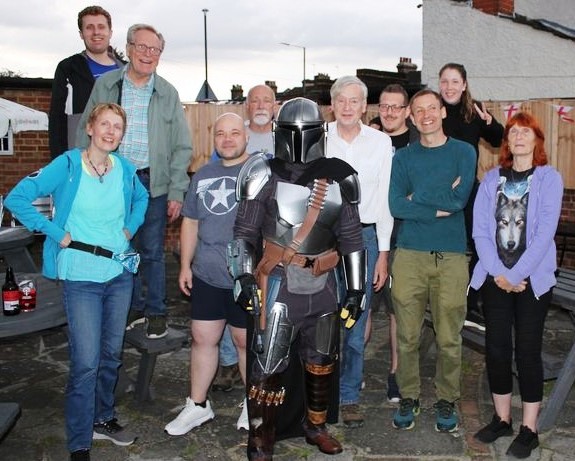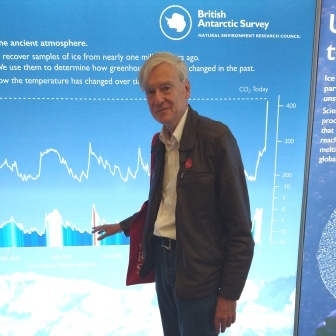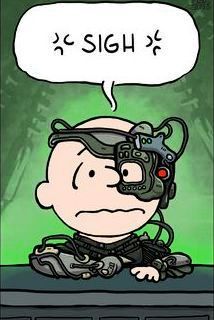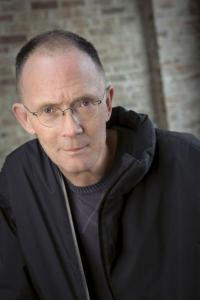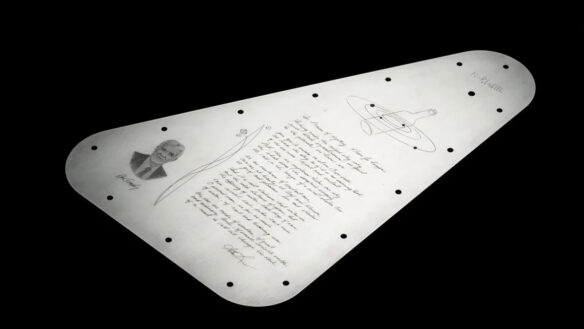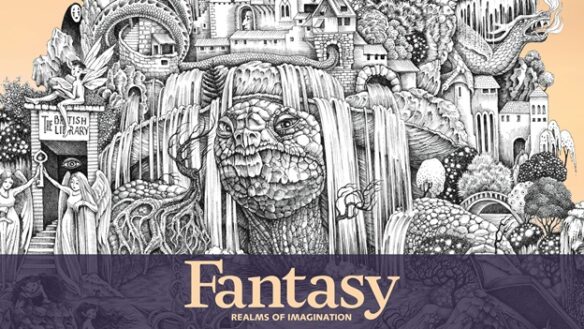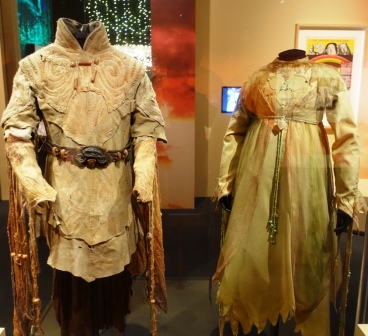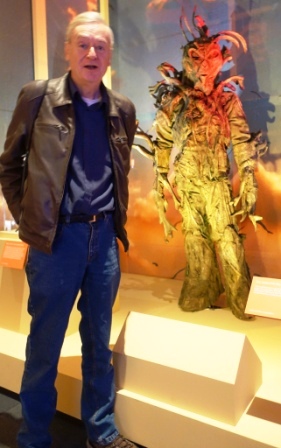(1) F&SF COVER REVEAL. The cover of the Summer 2024 issue of The Magazine of Fantasy and Science Fiction is by Mondolithic Studios.

(2) ADDED ATTRACTIONS. “The Obsession with Extra-Illustrating Books” discussed by The Huntington blog.
In the 18th and 19th centuries, an obsession spread among bibliophiles for extra-illustrating or grangerizing books. Readers would supplement the pages of an already published book by inserting prints and related materials acquired from other sources. This process would often result in a huge expansion of the original volume, a ballooning that could easily stretch the book to bursting, requiring rebinding into additional volumes to hold the interleaved material. Where did this practice come from? Who thought of doing it in the first place?
In 1769, a country vicar named James Granger (1723–1776) published A Biographical History of England, from Egbert the Great to the Revolution. A guide for collectors of portrait prints, the book cataloged and gave brief descriptions of significant personages in British history as well as directed readers to the most desirable engraved portraits of those subjects for their collections.
Granger’s friend Richard Bull (1721–1805), a member of Parliament and an avid collector, went well beyond using the book to find and procure the recommended prints for his collection. Instead, he dismantled and cut up Granger’s text, placing relevant passages with the corresponding engravings on large backing sheets that served as new pages, and then he bound all these pages together. This process radically altered and expanded the structure and contents of the original book.
Granger’s A Biographical History of England, published as four quarto volumes 9 inches tall, expanded in Bull’s hands to 35 folio volumes with leaves 23 to 28 inches tall, filled with 14,500 portrait prints. What had once been a work free of images—except for Granger’s portrait—became a mixed-media compendium of British historical figures. Today, it is known as the Bull Granger. The Huntington holds all 35 volumes of this first-identified project of extra-illustration, traditionally defined….

(3) HAPPY BOOK BIRTHDAY. Cat Rambo’s Rumor Has It, sequel to You Sexy Thing and Devil’s Gun, was released today.
(4) DREAMHAVEN BOOKS ACQUIRES ANOTHER STORE’S INVENTORY. Announced today on Facebook:
DreamHaven Books of Minneapolis is pleased to announce the acquisition of the remaining inventory of the 1990s Colorado bookstore, The Little Bookshop of Horrors. The Arvada Colorado bookstore specialized in Horror, Science Fiction and Mystery books and hosted frequent signings with authors. The owners, Doug and Tomi (Cheri) Lewis were also publishers of Roadkill Press who produced a number of chapbooks with the authors they would host.
The store closed after the death of Tomi Lewis in 1996 and Doug locked the doors and simply walked away. The store and it’s impressive inventory would sit for many years until it was more recently moved into a storage unit. Greg Ketter of DreamHaven Books agreed to purchase the remaining stock and has transferred it to his brick & mortar store in Minneapolis. The books are now being integrated into the store stock and certain items listed on ABE Books and eBay.
There are many signed books by Joe R. Lansdale, Dan Simmons, Edward Bryant, Harlan Ellison, John Dunning, Elmore Leonard, Donald Westlake and many others. Hundreds of limited edition and small press books are also included. Want lists are welcome (DreamHaven will not be able to quote books by phone; they are still sorting through hundreds of boxes of books).
(5) GET ON BOARD. The SFWA Blog continues its series on board game playtesting with “Playtesting TTRPG Stories”.
Don’t Help Playtesters
Give the material you’ve produced to a playtesting group without additional explanation or support. Effective game writing must stand without outside explanation.
A common error is supporting the players or gamemaster if they’re confused about how a narrative element should be presented or how some mechanics function. Observing playtests is a good source of data, but it’s best not to interfere directly. Watching someone get your game wrong is an important step in revising the text so that future customers will get it right….
(6) VIDEO GAME ACTORS STRIKE ACTION. Variety reports “’League of Legends’ Added to Actors’ Video Game Strike”.
After previously being exempt from inclusion in the ongoing video game actors strike, Riot Games‘ massively multiplayer online role-playing game “League of Legends” has been added to the list of blocked titles by SAG-AFTRA amid the union’s accusation of unfair labor practices against Formosa Interactive.
According to SAG-AFTRA, Formosa, a union signatory that provides voiceover services for “League of Legends,” is accused of trying to “cancel” one of its struck video games “shortly after the start of SAG-AFTRA’s video game strike” on July 26. SAG-AFTRA has filed a charge against the company with the National Labor Relations Board.
“When they were told that was not possible, they secretly transferred the game to a shell company and sent out casting notices for ‘NON-UNION’ talent only,” the union said. “SAG-AFTRA charges that these serious actions are egregious violations of core tenets of labor law – that employers cannot interfere with performers’ rights to form or join a union and they cannot discriminate against union performers. The unilateral and surreptitious transfer of union work to a ‘non-union’ shell company is an impermissible and appalling attempt to evade a strike action and destroy performers’ rights under labor law.”
It should be noted SAG-AFTRA is not accusing the Riot Games title of unfair labor practices, but rather calling for a strike against “League of Legends” because it is the most high profile title produced by Formosa Interactive.
In a statement Tuesday, “League of Legends” publisher Riot Games said: “‘League of Legends’ has nothing to do with the complaint mentioned in SAG-AFTRA’s press release. We want to be clear: Since becoming a union project five years ago, ‘League of Legends’ has only asked Formosa to engage with Union performers in the US and has never once suggested doing otherwise. In addition, we’ve never asked Formosa to cancel a game that we’ve registered. All of the allegations in SAG-AFTRA’s press release relating to canceling a game or hiring non-union talent relate to a non-Riot game, and have nothing to do with ‘League’ or any of our games.”…
(7) O CAPTAIN, MY CAPTAIN! “Writer David Gerrold said Star Trek held together because of William Shatner” at Redshirts Always Die.
…In The Fifty-Year Mission The First Twenty-Five Years by Edward Gross and Mark A. Altman, Gerrold was reported as having said that “all of the movies and all of the episodes hold together because Shatner holds it together.”
Gerrold pointed out that Spock [Leonard Nimoy] needed someone to play off of, and that was Captain Kirk. When Spock had scenes that didn’t involve the captain, he didn’t think they were interesting.
“The scenes where Spock doesn’t have Shatner to play off of are not interesting. If you look at Spock with his mom or dad, it’s very ponderous. But Spock working with Kirk has sthe magic and it plays very well, and people give all of the credit to Nimoy, not to Shatner.”…
(8) TERRY QUERY: WHERE’S ARNOLD? [Item by Daniel Dern.] My friend (and former boss) Paul Schindler is having no luck finding information, much less the online thing itself, of Sir Pterry’s story “Arnold, The Bominable Snowman” which is/was supposed to be published online this month (September 2024).
See Item 2 in the May 11, 2024 Pixel Scroll for more about the story proper, the onlineification, contest, etc:
(2) PTERRY SURPRISE. The Terry Pratchett website has announced “Another lost Terry Pratchett story found”
Thanks (on behalf of Paul, who I’ll advise of any follow-ups)
(9) TEDDY HARVIA CARTOON.

(10) TODAY’S BIRTHDAY.
[Written by Paul Weimer.]
Born September 24, 1934 – John Brunner. (Died 1995.)
By Paul Weimer: The man who saw our future. Or multiple futures. Yes, I know science fiction is really about the present much more than “predicting the future”, but take a look around at our year of 2024, with random violence, political instability, a kaleidoscope of fashions and trends, social divisions, global terrorism, extremism, billionaires running amok. And also, gay marriage, affirmative action, electric cars, the use of marijuana and more.

Aside from the fact that the random violence in the book is NOT gun-based, we seem to be living very much in the world of Brunner’s Stand on Zanzibar. But that’s not all. In The Sheep Look Up, we get environmental degradation, a Republican President who says the answer to all our problems is “Deregulation”, a widening gap between rich and poor, and a degradation of quality of life across the board. Or The Jagged Orbit, where a cabal of Republicans are going to use computers to swing an election. Or The Shockwave Rider, showing a United Stated dominated by computer networks a la the internet, even as infrastructure crumbles and crumbles.
Reading (or rereading Brunner) in 2024 can be a lot.
Beyond the gloom and doom of Brunner’s trilogy, though, there is much lighter fare if you want to try one of SF’s greatest visionaries. Out of his large oeuvre, my favorite is The Squares of the City. Boyd Hakluyt is a traffic and systems engineer who is hired by a fictional South American country to resolve a traffic and transit problem. While there, he gets wrapped up in a plot between the government and the not so loyal opposition, in a literal chess match where Boyd finds himself a piece on the board. It’s a taut and fun political thriller that might be a bit light on the SF, but high on tension, drama, and if you like chess, you will love this book. And then there is The Infinitive of Go, which is the type of multiverse novel whose implications slowly creep on you.
(11) COMICS SECTION.
- Brewster Rockit and Thatababy have posted James Earl Jones memorials.
- Phoebe and Her Unicorn discuss overlords.
- Reality Check has a vengeful character with a soundalike name.
- Rudy Park has two bros reactions to cosmic news.
(12) DIAL THAT DOWN. [Item by Mike Kennedy.] The folks behind HBO’s new “workplace comedy” about the creation of a superhero franchise movie claim they had to take what happens in real life movie making down a notch. Otherwise, they say, no one would believe them. It would just be too silly. The Hollywood Reporter has the story of The Franchise.
There’s a situation discussed in HBO’s upcoming series The Franchise — a comedy about the behind-the-scenes struggle to make a superhero movie — that sounds rather absurd: A director laboring away on a fictional Marvel-like film gradually realizes the studio brass has changed their mind about the project’s creative direction and started secretly shooting the “real” movie somewhere else, while he continues to film scenes destined to be scrapped.
Yet this has actually happened to at least one filmmaker working on a franchise movie, according to the show’s producers.
“All the research we did — and we did tons, we spoke to so many people — the actual chaos [on superhero films] was really surprising,” says The Franchise creator Jon Brown (Succession), who made the series along with Armando Iannucci (Veep) and Oscar-winning director Sam Mendes (1917). “People think these movies are laid out in neat phases for the next 10 years. Then you hear about a set where, in the morning, a limo literally pulls up, the window comes down, and they hand out new script pages. Or producers on set have eight versions of the same script open, and they go through each script, cherry picking lines, and then they Frankenstein a scene out of nothing. Or the studio sends an actor to the set in the morning and they basically rewrite the day’s entire scene [to accommodate the last-minute cast addition]. You would assume all this was decided two years ago, but it’s happened a lot across Marvel and DC movies.”
As a result, the writers of The Franchise found themselves in the rather odd position of sometimes making story choices for their show that were less wild than the real-life anecdotes they were hearing from industry insiders. “You think, ‘I know this is real, but it just seems too silly,'” Brown said. “So we sometimes have to take it back a step, because you don’t think people will believe it unless they know it’s true.”…
(13) COLLECTORS ITEM. Are you in the market for a complete run of Weird Tales? This one can be yours for $150,000. “RARE! Complete Set of Weird Tales” at eBay.

(14) LATEST EDITION SONIC SCREWDRIVER. “Doctor Who fans unveils Fifteenth Doctor’s sonic screwdriver – pre-order now” — Radio Times tells what button to push.
While it’s been a few months since the adventures of the Fifteenth Doctor and companion Ruby Sunday, the excitement lives on, as fans can now pre-order the Doctor’s trust sonic screwdriver!
The screwdriver is available to pre-order from Character Options at £39.99….

“Doctor Who The Fifteenth Doctor’s Sonic Screwdriver Deluxe Edition” at Character Online.
The Fifteenth Doctor’s sonic screwdriver boasts a completely revamped shape and design, with its curved edges, making it the most unique rendition of his favourite bit of tech yet.
The deluxe version, available only on Character online, boasts an exclusive ‘electro plated’ finish making it look like real polished steel and brass. It features two modes of operation, Open and Closed, as well as five brand new and totally unique sound and light effects, with each accessed by a different button sequence.
On this deluxe version of The Fifteenth Doctor’s device there are many new features including a uniquely shaped, swivel-out Power Core complete with flickering Power Crystal Chamber and on/off sounds. There are also three distinctly different sounds with accompanying light FX; a standard sonic sound, a data sound, and a lifeform scan sound. The spring-out and retract Emitter section also has its own sound and finally the slide out analyser comes with its own sound completing the sound FX.
The sonic comes beautifully presented in Regeneration style packaging and is the perfect piece of memorabilia to add to any Doctor Who collection.

(15) IF PUSH COMES TO SHOVE. “Nuclear blast could save Earth from large asteroid, scientists say” – the Guardian has the story.
Scientists, as well as Hollywood movie producers, have long looked to nuclear bombs as a promising form of defence should a massive asteroid appear without warning on a collision course with Earth.
Now, researchers at a US government facility have put the idea on a firm footing, showing how such a blast might save the world in the first comprehensive demo of nuclear-assisted planetary defence.
Physicists at Sandia National Laboratories, whose primary mission is to ensure the safety and security of the US nuclear arsenal, recorded in nanosecond detail how an immense pulse of radiation unleashed by a nuclear blast could vaporise the side of a nearby asteroid.
The event is so violent that it heats the surface to tens of thousands of degrees, producing a rapidly expanding ball of gas capable of nudging the asteroid off course. Do the sums correctly and the shunt should be sufficient to put doomsday on hold.
(16) TEN YEARS OF SCIENCE AND FUTURISM. [Item by SF Concatenation’s Jonathan Cowie.] As regular Filers may have spotted, I occasionally throw a link 770’s way to Science and Futurism with Isaac Arthur’s YouTube Channel (among much other material). The video item on “Transcendence” last week on File770 actually marked the 10th anniversary of that channel but I failed to include a mention that and that that episode also happened to coincide with Isaac’s 44th birthday.
As Mike knows, but you most likely don’t, I am one of the rare, endangered western-nation species that is not on the internet at home (actually, in the UK currently some 35% UK households solely occupied by over 65s are not on the internet so actually I am not as rare a creature as many of you may suspect – so always respect digital access diversity – the recent Glasgow Worldcon was not). What happens is this, working almost next door for an hour three or four times a week at the library cybercafé, if I spot an item of likely interest to Filers and then pass it Mike’s way for him to decide whether or not to include. This is an important filter as usually I spot things without looking at them in depth (I do that later at home having downloaded whatever it is to memory stick), so some duff material can get through and Mike commendably filters that out. This survey of the landscape is no hardship on my part as I have to keep an eye out for material for the seasonal SF² Concatenation. That zine has just three principal editions a year, whereas Mike’s is daily, so it makes sense for File770 to have first dibs as it could be up to four months before anything I (and other providers) air in Concatenation. Mike only uses 0.01% of the stuff I send him, so if you want to see other SF (through more a European/British prism) & science coverage then feel free to drop in on SF² Concatenation just three times a year.
Meanwhile, back to Science and Futurism with Isaac Arthur, the previously linked “Transcendence” episode was number 465 in Isaac’s run or actually 700 in that series if you include Isaac Arthur’s shorts, live-streams and specials. Ohio-based Isaac is also currently the incumbent President of the National (US) Space Society, which I guess is the US analogue of our British Interplanetary Society. As for Isaac’s future episodes, of applied science interest is a forthcoming one on “Is Privacy Going Extinct” on 26th September (2024), and of SFnal/science interest “The Fermi Paradox: Large Moons” on 3rd October. Then, in more of an SFnal vein there will be one on “Fungal Aliens” on 13th October. You can check these out at www.youtube.com/@isaacarthurSFIA. He has more background info at www.IsaacArthur.net.
I should point out that Isaac’s channel is not the only one I monitor. His channel has a few occasional items of SF/SF interest for my catholic taste, but as for some of my other favourites there is: for pure physics I enjoy Matt O’Dowd at PBS Space-Time; for palaeo-environmental science (which is fairly close to my own specialist area) PBS Eons; for astrophysics Dave Kipping at Cool Worlds; for astronomy Becky Smethurst at Doctor Becky and for the presentation of the sheer love of finding out about SF Moid Moidelhoff at Media Death Cult and that of the joy of SF book collecting Book Pilled. There are, of course, other channels out there, and I dare say Mike would welcome your recommendations in the comments…
(17) SECRET ORIGINS OF PLOKTA, PT. 1. The Fanac Fanhistory Zoom for September 2024 is online:
This fannish group (aka the Plokta Cabal) burst on the scene in May 1996 with the fanzine Plokta, which went on to receive two Best Fanzine Hugos, 2 Nova Awards for Best Fanzine, and Hugo nominations each year from 1999 to 2008. They are energetic, quirky and very, very funny. They are writers, artists, con runners, Worldcon bidders and fan fund winners.
In part 1 (of 2), Steve Davies, Sue Mason, Alison Scott and Mike Scott, recount how they came into fandom and found each other. They tell entertaining stories of their fannish lives, from convention newsletters to the celebrated Plokta to the glories of providing a unique in-joke badge to each member of a convention. You’ll learn what a SMURF is, hear strong opinions about staples, and find out just what voodoo board spam can be. Plokta was one of the first web fanzines, and came together differently than most other fanzines. The group dynamics and interactions that created it are on full display in this recording. It’s great fun to watch, and it’s very, very clear that it was great fun to live.
[Thanks to Steven French, Kathy Sullivan, Teddy Harvia, Gordon Van Gelder, Paul Weimer, Michael J. Walsh, Mike Kennedy, Andrew Porter, John King Tarpinian, Chris Barkley, Cat Eldridge, and SF Concatenation’s Jonathan Cowie for some of these stories. Title credit belongs to File 770 contributing editor of the day Bill.]














